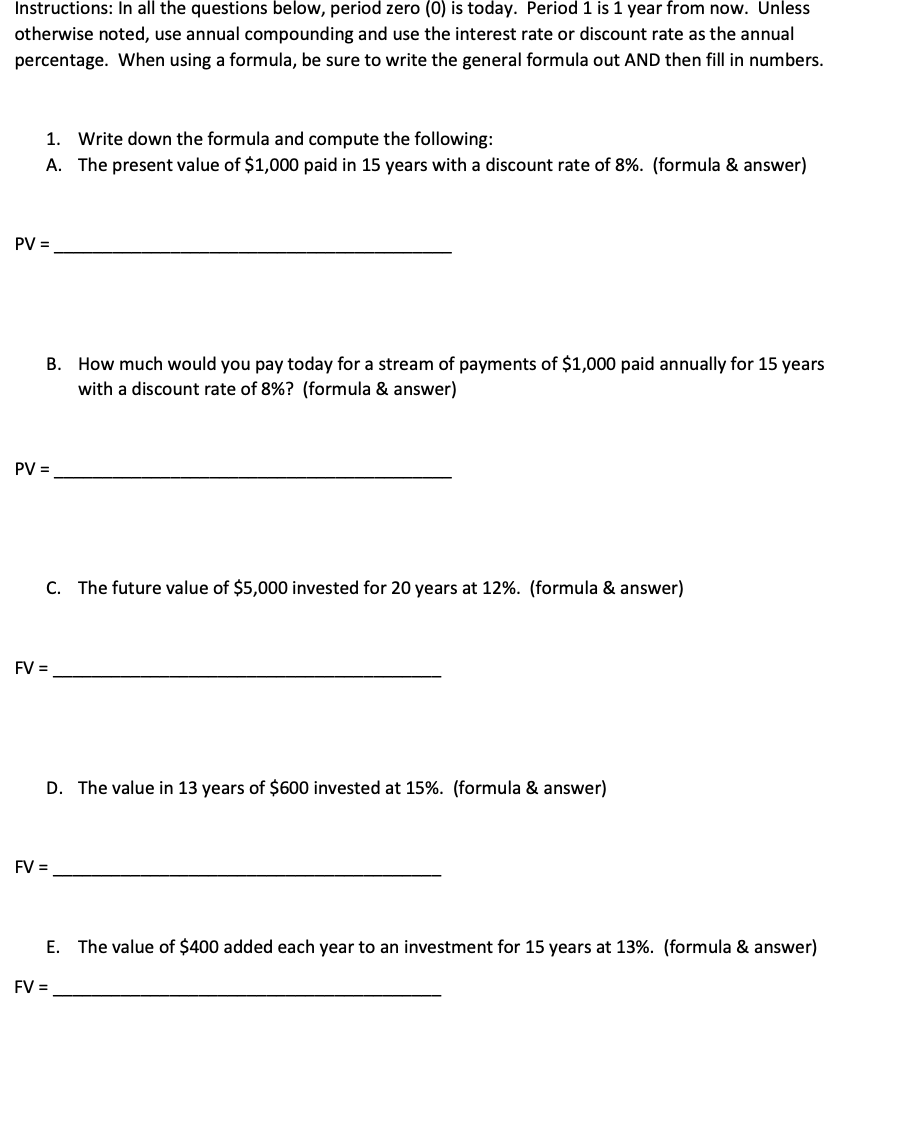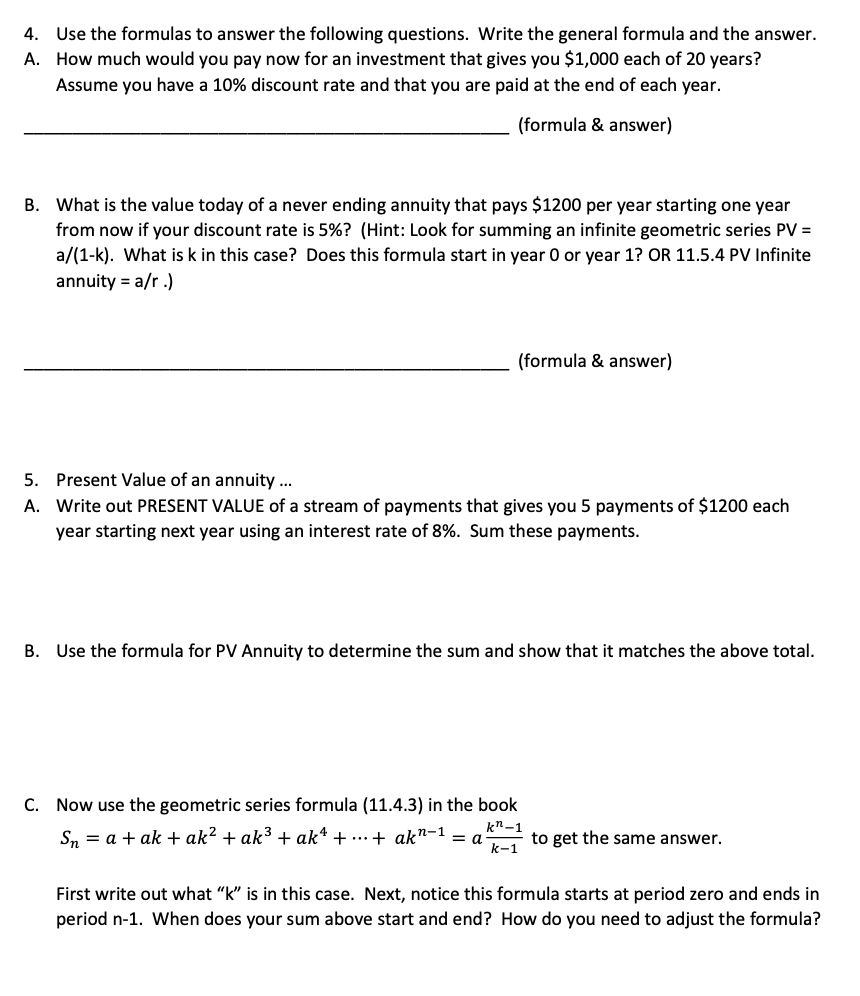Answered step by step
Verified Expert Solution
Question
1 Approved Answer
Instructions: In all the questions below, period zero (0) is today. Period 1 is 1 year from now. Unless otherwise noted, use annual compounding



Instructions: In all the questions below, period zero (0) is today. Period 1 is 1 year from now. Unless otherwise noted, use annual compounding and use the interest rate or discount rate as the annual percentage. When using a formula, be sure to write the general formula out AND then fill in numbers. PV = PV= FV = FV = FV = 1. Write down the formula and compute the following: A. The present value of $1,000 paid in 15 years with a discount rate of 8%. (formula & answer) B. How much would you pay today for a stream of payments of $1,000 paid annually for 15 years with a discount rate of 8%? (formula & answer) C. The future value of $5,000 invested for 20 years at 12%. (formula & answer) D. The value in 13 years of $600 invested at 15%. (formula & answer) E. The value of $400 added each year to an investment for 15 years at 13%. (formula & answer) 2. A. What is the total sum if you invested $1,200 each year and for 45 years. Use an 8% annual interest rate and determine the value immediately after the last deposit. (formula & answer) B. Suppose you can earn 8% on an investment and that you will make annual payments over your work life of 45 years with each investment made at the end of the year (same as part A). How much would you need to save each year if you wanted to have $1M immediately after the last payment? (Hint carefully look at your work for part A.) Show your work and the general formula. - (formula & answer) 3. A firm is expected to earn a constant level of profit of $100,000 per year in perpetuity. Using an interest rate of 7%, compute the present value of the future profits. Show your work and general formula. 4. Use the formulas to answer the following questions. Write the general formula and the answer. A. How much would you pay now for an investment that gives you $1,000 each of 20 years? Assume you have a 10% discount rate and that you are paid at the end of each year. (formula & answer) B. What is the value today of a never ending annuity that pays $1200 per year starting one year from now if your discount rate is 5%? (Hint: Look for summing an infinite geometric series PV = a/(1-k). What is k in this case? Does this formula start in year 0 or year 1? OR 11.5.4 PV Infinite annuity = a/r.) (formula & answer) 5. Present Value of an annuity ... A. Write out PRESENT VALUE of a stream of payments that gives you 5 payments of $1200 each year starting next year using an interest rate of 8%. Sum these payments. B. Use the formula for PV Annuity to determine the sum and show that it matches the above total. C. Now use the geometric series formula (11.4.3) in the book Sn = a + ak + ak + ak + ak + ... + ak^-1 = a kn -1 to get the same answer. First write out what "k" is in this case. Next, notice this formula starts at period zero and ends in period n-1. When does your sum above start and end? How do you need to adjust the formula?
Step by Step Solution
There are 3 Steps involved in it
Step: 1

Get Instant Access to Expert-Tailored Solutions
See step-by-step solutions with expert insights and AI powered tools for academic success
Step: 2

Step: 3

Ace Your Homework with AI
Get the answers you need in no time with our AI-driven, step-by-step assistance
Get Started


